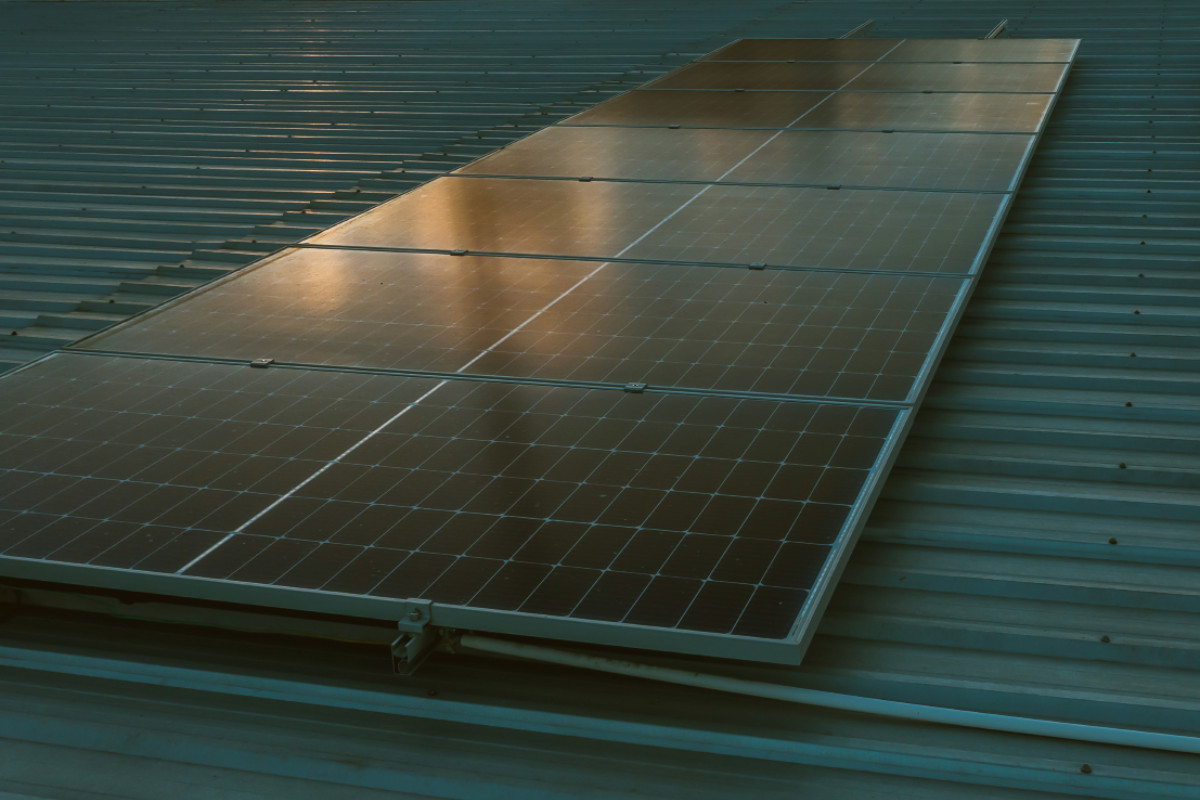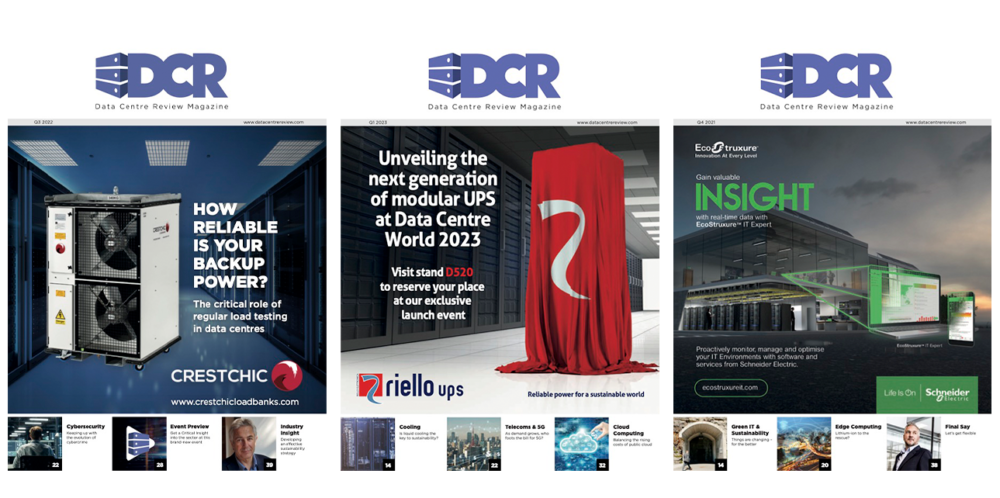In this Q&A, ABB Electrification’s Massimo Muzzì says microgrids, battery-backed UPS and AI-powered energy analytics can meet the surging demand for data centres without torching budgets – or the planet.
1. What’s keeping data centre operators awake at night?
Data centre operators are under pressure from all sides. On the demand side, AI and the IoT are driving more capacity requirements with every passing minute. As with traditional utilities, that capacity needs to be able to flex, and so predicting and managing this growth – while avoiding wasted resources and overcapacity – is a major challenge.
Meanwhile on the supply side, ramping up capacity quickly to match this escalating demand is also not always straightforward. Securing the required power from the grid, purchasing land, and signing contracts for facility construction can sometimes take years. Energy is one of the largest single costs incurred by data centres, and so efficiencies must be found wherever possible to drive costs down.
Data centres inherently use large amounts of energy and water, and produce large amounts of heat, which combine to fuel negative perceptions of the industry. The best way to counter this narrative is by reducing facilities’ environmental impact.
Within the data centre itself, space constraints can limit capacity, while the sheer complexity of systems can make maintenance and reliability a major challenge. Even a brief outage can be extremely costly, and so potential issues need to be detected and mitigated long before they develop into full-blown faults.
As well as addressing all of these issues, data centres must also achieve cost-effective operation. This, I would argue, is what keeps data centre operators up at night most of all.
2. According to the International Energy Agency, global electricity consumption by data centres is expected to more than double by 2030, with AI being the main driver. What do you see as the solution to helping manage the impact of this demand on the grid?
AI requires far more computing power than traditional cloud computing functions, placing significant pressure on servers and local utility grids.
The solution is to find ways to address this increased requirement for power using the best available technologies. The latest generation of substation, power protection, cabling and monitoring technologies, for instance, are helping to keep data centres running 24/7 in a sustainable way by managing power more efficiently. One example is a UPS solution which can be used as a battery storage solution to stabilise and secure networks by tapping into unused power reserves.
Other potential solutions include localised microgrid solutions that can enhance efficient use of a data centre’s energy mix. Ironically, AI itself also has a role to play in better managing energy consumption.
3. In what ways can electrification enhance grid availability and support data centre operators in managing energy effectively?
The energy intensity of data centre operations has forced the industry to be proactive in implementing digital technologies. This includes everything from energy monitoring and management to asset intelligence, that allow operators to anticipate and avoid costly downtime.
Many of these technologies can provide deep, component-level visibility of assets all the way to the performance and efficiency of the overall electrical network, encouraging a more pro-active maintenance strategy. A growing proliferation of smart devices is also equipping operators with actionable energy efficiency insights and troubleshooting data. These digital solutions can also help to simplify hardware and wiring, lowering operational costs.
For applications facing a need to ramp up quickly, modular prefabricated solutions are also proving to enable rapid yet manageable growth, reducing deployment times by between 30 to 50%.
4. How can software and hardware be used together to help manage data centre energy demand?
A data centre is by its very nature an integration of hardware and software, in a way that few other facilities are. In a factory for instance, hardware can be run slower or faster, or at different times, or made smaller or more streamlined to save energy. In contrast, a data centre has little in the way of moving parts and is also often running 24/7. This makes it difficult to identify obvious opportunities to save energy, and this is where software increasingly comes in.
Modern data centres can use software to monitor, manage and optimise the energy consumption of hardware such as servers, networking equipment, and electrical infrastructure. In practice, this might mean allocating duties to more energy efficient devices in times of low demand or ramping up power draw when rates are off-peak. It can throttle cooling functions on particularly cold days or use historical data to predict load patterns and adjust accordingly. Of course, to detect and react to wider conditions, sensors – a form of hardware – are necessary to provide software with the inputs it needs.
Both software and hardware are closely interrelated, and this is fundamentally necessary to drive improvements in performance, reliability and efficiency.
5. How do you see the evolution of microgrids and decentralised energy systems to manage data centre energy demand within the next five years?
Microgrid solutions offer significant opportunities for data centres to benefit from the advantages of on-site generation, such as using solar panels coupled with a battery energy storage system to support and protect continuous power flow. Microgrids can reduce costs, optimise power use, enhance sustainability, and even generate revenue in the event of surplus power generation.
Crucially, the power architecture of a microgrid, including energy storage and on-site renewable generation, can be scaled with relative ease.
Integrated energy management systems and smart software solutions can track how all the interconnected assets of the microgrid-enabled data centre perform and ensure there is no wasted energy.
Future microgrids are expected to become even more intelligent, with advanced technologies like AI and 5G playing a role in optimising energy management and grid interaction.
6. What role will AI play in the future of electrification?
AI technologies will support the optimal operation of the microgrid by learning consumption and generation patterns and adapting to their needs. Using historical data and trend analysis to inform decision-making is nothing new. However, this takes it a step further, and equips assets with their own intelligence to ensure optimal efficiency at all times.
New developments in AI will also drive the future of smart building solutions, smart metering and monitoring, augmented reality, storage, electrical power management systems, scalable building automation solutions, monitoring and protection and control, temperature.
7. What are some of the common misconceptions data centre operators have about electrification?
Arguably the biggest misconception is that data centre demand will outstrip the capabilities of current infrastructure, or that it will become prohibitively expensive or too environmentally destructive to keep pace with insatiable data demand. In fact, today’s electrification technologies are more than capable of keeping pace with demand, and as well as becoming more efficient all the time, are increasingly designed with rapid scaling in mind. Power monitoring and management is becoming ever more sophisticated, helping to reduce running costs while also extending asset life.


